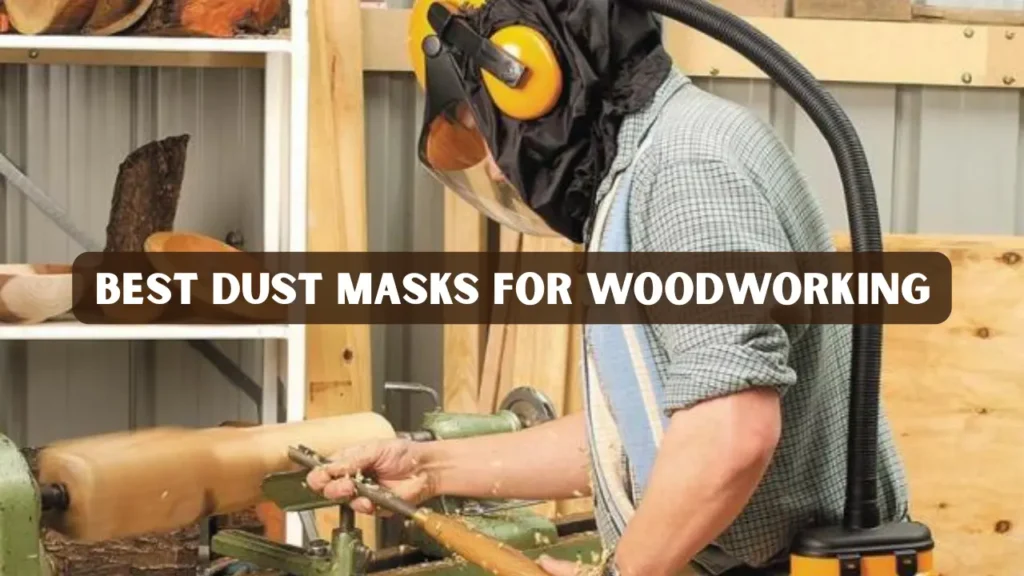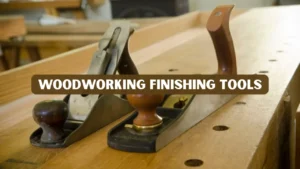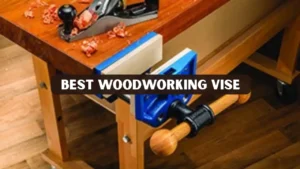Woodworking is a rewarding craft that blends creativity, precision, and skill. However, it also exposes woodworkers to invisible hazards such as fine dust, chemical fumes, and sawdust particles. These tiny contaminants can linger in the air and penetrate deep into the lungs, posing serious health risks over time.
Using the best dust mask for woodworking is essential for both hobbyists and professionals. The right mask not only protects your lungs but also improves comfort and focus during work. This guide explores why dust masks matter, the different types available, maintenance tips, and real-world examples to help you stay safe while crafting your projects.
Key Takeaways
- Dust masks prevent respiratory problems, allergic reactions, and long-term lung damage.
- Choosing the best dust mask for woodworking depends on dust type, comfort, and filter quality.
- Proper usage and maintenance are critical for long-term protection.
- Different types of masks are suitable for different woodworking tasks, from small hobby projects to professional workshops.
Why Woodworkers Need the Dust Mask for Woodworking
Woodworking generates fine dust particles that can penetrate deep into the lungs, causing serious health issues over time. Even small projects can expose hobbyists to harmful dust, making protective equipment like the best dust mask for woodworking essential for long-term safety and respiratory health.
Health Risks from Wood Dust
- Asthma, bronchitis, and other chronic respiratory conditions
- Allergic reactions, coughing, and eye irritation
- Exposure to certain hardwood dust, such as oak or beech, has been linked to cancer
- Chemical dust from finishes, stains, and adhesives can also cause long-term damage
Common Wood Dust Types
- Softwood dust, including pine and cedar
- Hardwood dust, such as oak, maple, and cherry
- Engineered wood dust like MDF and plywood
- Dust mixed with chemical particles from stains, adhesives, and sealants
Types of Dust Masks for Woodworking
Selecting the correct mask depends on your exposure level, project type, and personal comfort. Here are ten essential types for woodworkers:
1. Disposable N95 Masks
2. Disposable N99 and N100 Masks
- Higher filtration efficiency for finer dust particles. It captures smaller particles that standard masks might miss.
- Protects against more hazardous dust. This makes it ideal for professionals working in high-dust environments.
- Suitable for wood species that produce ultra-fine dust. It’s especially useful when working with hardwoods like oak or maple.
3. Reusable Half-Face Elastomeric Respirators
- Covers the nose and mouth with replaceable cartridges. It ensures consistent protection with easy filter replacement.
- Durable and provides a secure seal. The snug fit prevents dust leaks during long work sessions.
- Ideal for frequent woodworking sessions and professional use. It’s a reliable choice for workshops and regular heavy-duty projects.
4. Reusable Full-Face Elastomeric Respirators
- Protects the eyes and entire face along with the respiratory system. It offers complete coverage for maximum safety.
- Replaceable filters ensure long-term protection. You can maintain efficiency by changing filters regularly.
- Recommended when working with chemical finishes or large-scale sanding. It’s perfect for professionals handling intensive woodworking tasks.
5. Powered Air-Purifying Respirators (PAPRs)
- Battery-powered blower moves air through filters, providing comfort and high protection. It keeps airflow steady for easier breathing.
- Reduces breathing resistance. This makes it comfortable to wear during extended woodworking sessions.
- Suitable for long hours in professional woodshops. It’s designed for consistent performance in demanding environments.
6. Valved and Non-Valved Masks
- Valved masks reduce exhalation resistance and improve comfort. They’re ideal for hot or humid work conditions.
- Non-valved masks provide better containment of dust. These are preferred in shared or enclosed workshop spaces.
- Choose according to comfort and the level of protection required. Selecting the right style ensures both safety and ease of use.
7. Chemical and Vapor Cartridge Masks
- Combines particulate and chemical protection. It shields you from both dust and harmful vapors.
- Essential for projects using stains, glues, or finishes. This type of mask ensures safe breathing during chemical-heavy tasks.
- Cartridges should be replaced regularly based on usage. Changing them on time keeps filtration effective and reliable.
8. Low-Profile Compact Respirators
- Slim design for better visibility and comfort. It allows you to work precisely without visual obstruction.
- Compatible with glasses. The snug fit minimizes fogging and slipping during detailed tasks.
- Ideal for hobbyists or small projects. It’s lightweight and convenient for occasional woodworking use.
9. High-Efficiency Particle (HEPA/P100) Masks
- Filters ultra-fine dust, including hazardous wood species. It provides advanced protection for sensitive respiratory systems.
- Suitable for both professional and specialized woodworking projects. It’s trusted by experts who handle intensive sanding or cutting.
- Expensive but highly protective. The long-lasting performance justifies the higher cost for serious woodworkers.
10. Loose-Fitting Powered Hoods and Helmets
- Covers the entire face and head. It provides complete protection from dust and airborne particles.
- Ideal for users with facial hair or those needing maximum protection. The loose fit ensures safety without requiring a tight seal.
- Offers comfort and mobility, though more costly. It’s a premium choice for professionals working in high-exposure environments.
Features to Look for in the Best Dust Mask for Woodworking
Choosing the right mask requires careful consideration of features that affect both safety and comfort.
Filtration Efficiency
- N95, N99, P100, and HEPA filters remove varying levels of dust particles. Each type offers different protection levels for specific tasks.
- Higher efficiency is critical for fine dust or chemical-laden projects. Choosing the right filter ensures cleaner air and better health protection.
Comfort and Fit
- Adjustable straps and soft seals ensure long-term wear. They provide a snug fit for better comfort and protection.
- Lightweight design reduces fatigue during prolonged sessions. This makes it easier to focus on detailed woodworking tasks.
Durability and Reusability
- Reusable masks with replaceable cartridges offer cost-effective protection over time. They’re ideal for woodworkers who need long-term safety gear.
- Inspect masks regularly for wear and tear. Checking seals and straps ensures consistent protection during every project.
Certification
Breathability and Visibility:
How to Properly Use and Maintain Your Dust Mask
Even the best dust mask can fail if used incorrectly. Follow these guidelines:
Usage Tips:
Maintenance Tips:
Top Recommendations for Woodworking Dust Masks
Here are some highly-rated options that balance safety, comfort, and affordability.
1. 3M N95 Disposable Respirator
- Lightweight, reliable, and ideal for hobby projects. It’s a great starter option for casual woodworkers.
- Offers basic protection against fine sawdust during short sessions.
2. 3M Half-Face Elastomeric Respirator 6200
- Durable and perfect for long-term use. The replaceable filters make it a cost-effective choice.
- Comfortable straps and soft sealing edges enhance extended wear.
3. Honeywell North Full-Face Respirator
- Provides excellent protection for chemical finishes. It also shields your eyes from dust and fumes.
- Ideal for environments where both dust and vapors are present.
4. Sundström SR 100 PAPR System
- Professional grade system for heavy woodworking tasks. The powered airflow ensures comfort during long sessions.
- Its rechargeable battery makes it practical for daily workshop use.
5. GVS Elipse P100
- Compact and comfortable with high efficiency filtration. It fits securely and works well for detailed woodworking projects.
- The low profile design allows clear vision while working close to tools.
6. Trend Air Stealth P3R Dust Mask
- Features a slim design with twin filters for excellent dust protection and low breathing resistance.
- Reusable and lightweight, perfect for frequent hobbyists or small shops.
7. RZ M2 Mesh Dust Mask
- Lightweight, reusable, and designed with replaceable active carbon filters for long hours in the shop.
- The breathable mesh frame keeps you cool in warm environments.
8. Moldex 2400N95 Respirator
- Equipped with a vented valve for cooler breathing and soft outer shell for comfort.
- Easy to put on and dispose of, making it great for occasional woodworking.
9. JSP Force 8 Half Mask with PressToCheck Filters
- Allows you to instantly check filter seal before use and is ideal for professionals.
- Provides exceptional fit and safety verification before every session.
10. Miller Electric LPR 100 Respirator
- Low profile design fits under welding or woodworking helmets and offers P100 filtration efficiency.
- Long lasting filters and cushioned face seal ensure consistent comfort.
These recommendations are based on expert reviews, user ratings, and manufacturer certifications, ensuring that both professionals and hobbyists can make informed choices for their safety.
Case Study
- John, a professional woodworker, developed chronic coughing and eye irritation from sanding hardwood without a proper mask, but switching to a reusable P100 respirator improved his health within two months.
- Sarah, a hobbyist working with MDF, suffered frequent allergies until she started using a certified N95 mask, which significantly reduced her symptoms and allowed her to continue projects safely.
These experiences highlight how choosing the best dust mask for woodworking can protect your health and enhance long-term comfort during every project.
Conclusion
Protecting your lungs is just as important as perfecting your woodworking skills. Whether you’re a beginner or a professional, the type of projects you work on and the dust you encounter will determine which mask suits you best. From disposable N95 masks to advanced PAPRs, every woodworker can find an option that balances protection, comfort, and performance.
Incorporating proper usage and maintenance habits ensures your dust mask continues to perform effectively. Always choose a certified mask that offers reliable filtration and a secure fit. With the best dust mask for woodworking, you can focus on creativity and craftsmanship while keeping your health fully protected.
FAQs
Which dust mask is best for fine sawdust?
High-efficiency P100 or HEPA-rated masks provide the best protection against fine dust particles.
Can I use a regular N95 mask for woodworking?
Yes, N95 masks are suitable for light dust exposure but may not protect against chemical-laden dust from finishes or adhesives.
How often should I replace a reusable dust mask filter?
Filters should be replaced after heavy use, typically every 40 hours, or as recommended by the manufacturer.
Are full-face respirators necessary for hobby projects?
Half-face respirators are usually sufficient for small-scale projects. Full-face masks are recommended for chemical exposure or professional use.
Can I wear a mask with glasses?
Yes, low-profile or compact masks are compatible with glasses and reduce fogging during use.




